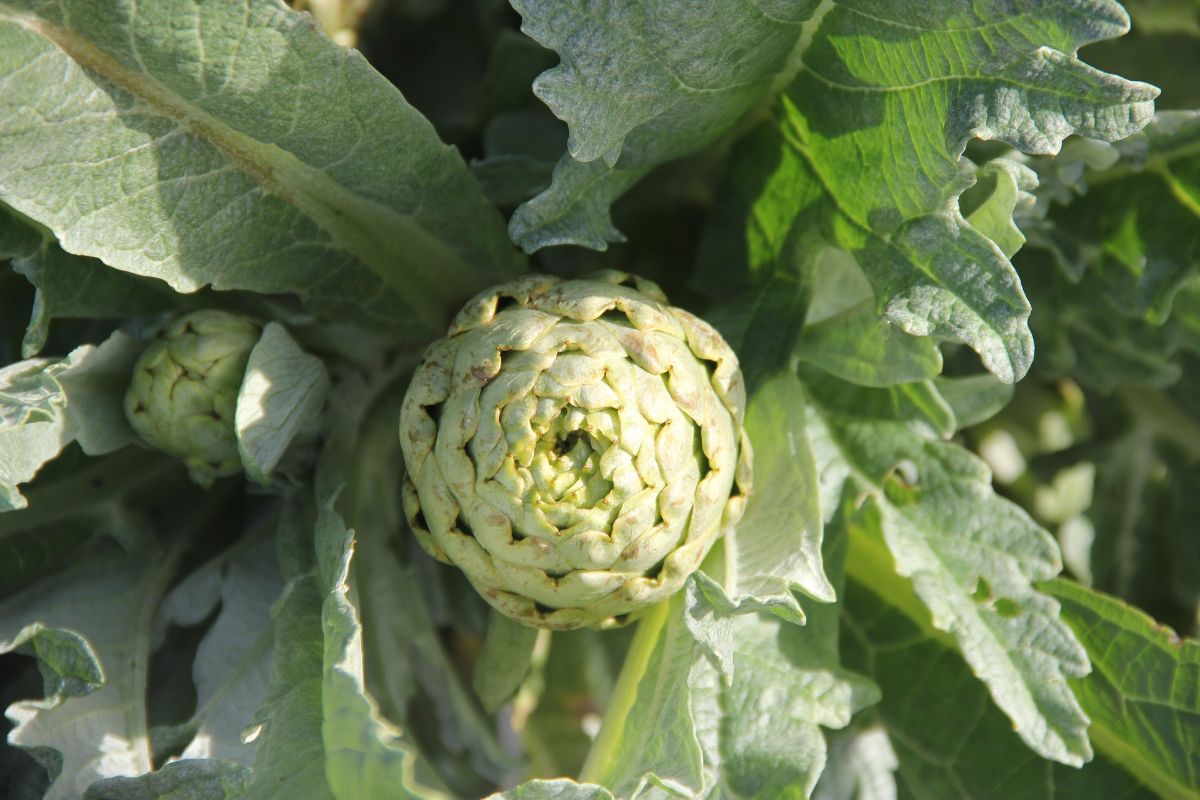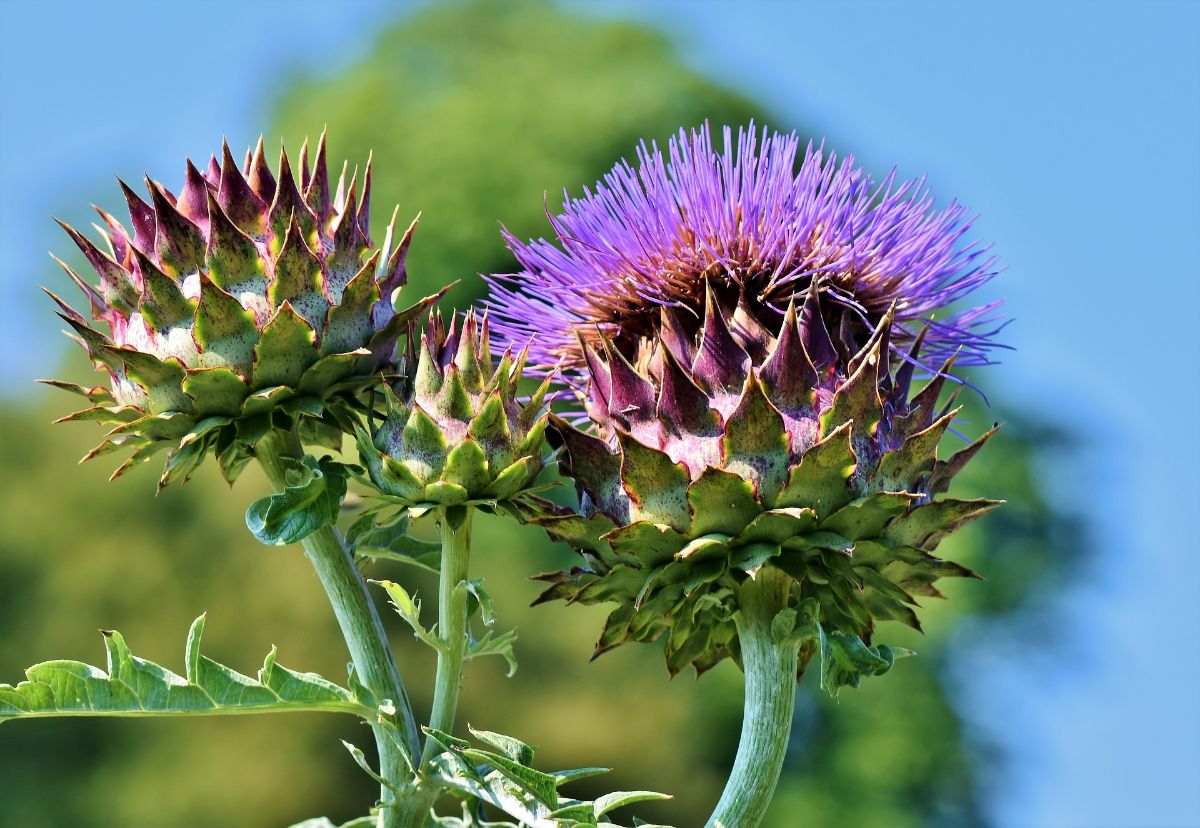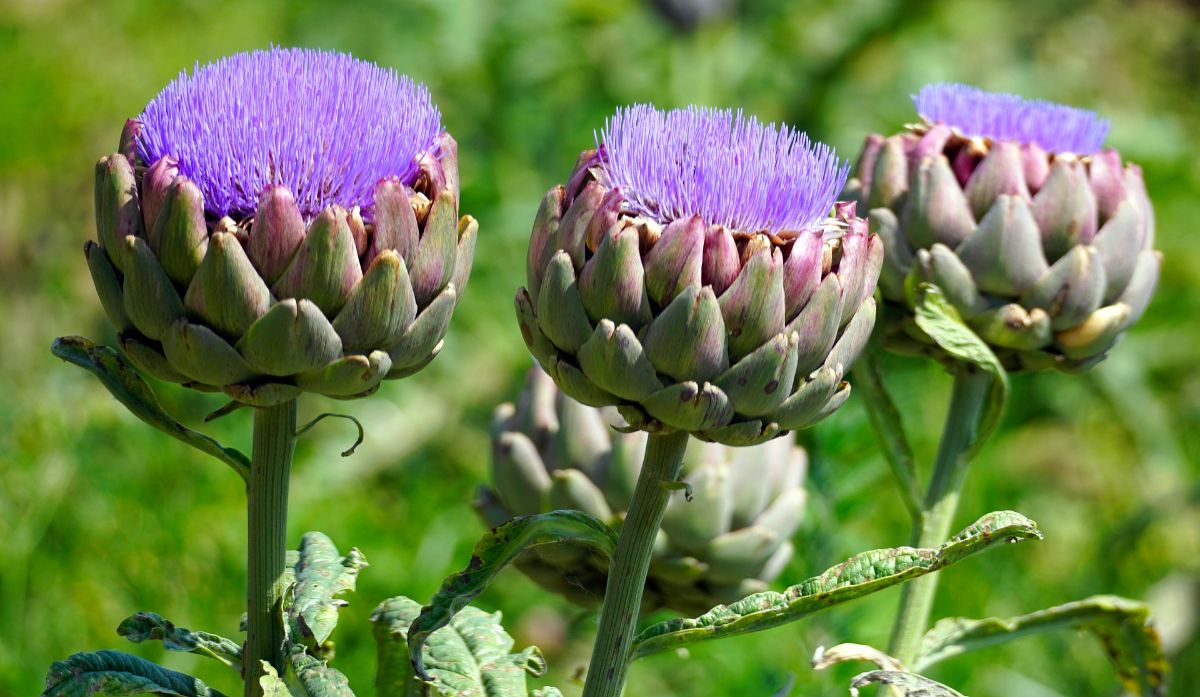
The artichoke, as you know, and if not we will tell you, is a crop that can last you several years (between 2 and 4). For this reason, the pruning of the artichoke becomes one of the most important care that exists.
But what should you know about him? How should it be done? In what time? How to prune the artichoke? If you have doubts, we will try to solve them right here.
How is the artichoke

The artichoke, scientific name Cynara scolymusIt is a very old crop. It has been cultivated mainly in North Africa and southern Europe. These are their countries of origin. However, the truth is that there are now many different varieties.
this is composed of several parts:
- The root, which is very strong and vigorous, capable of adapting to any soil where you plant it. It is where the nutrients accumulate to feed the entire plant.
- Leaves. Which are long and large, with a touch as if you were touching cotton.
- Flowers. These are thick and you should know that they develop a kind of scales that are edible.
- The fruits. Which are gray and oblong. There goes the seed of the plant but it takes several years for it to germinate.
To give you an idea, the artichoke has a cycle of birth, development and death.
In development, the plant acquires a vertical formation, branching into two or three different slopes and, each one of them, will give you between four and six flowers. That same year, there could be another budding (which they call 'cardet').
When is the pruning of the artichoke carried out?
Really There is no specific date for the pruning of the artichoke because it depends on many factors. But there is an element that is the one that notifies you of the moment of pruning: after the first harvest, or the first harvest of the artichoke.
That is, the artichoke plant must grow "freely" where you have placed it and this will give you a first harvest of artichokes. Well, when you have collected all the artichokes that it has given you, it is time for you to prune it.
Furthermore, this you must repeat it in each new cycle. That is, after each harvest, you must prune the plant.
Note that, From when you plant the artichoke until you get its fruits, it can take from 8 months to a year. But if stakes (cuttings) are planted then the time is greatly reduced, to 4-5 months only.
Why is the artichoke plant pruned?
Many believe that if the artichoke is cut, it is more difficult for it to bear fruit again, but the truth is that this is not the case.
With pruning you not only manage to sanitize and clean the area, but it also favors growth. And it is that, let's say that, by cutting the "mother plant", you encourage the plant to develop again, create "offspring" and bear fruit again.
Otherwise, it will not do it, but neither will its production be adequate (or good) if it is not cut.
How to prune the artichoke

To carry out the pruning of the artichoke, you will need a knife or similar tool that is well-sharpened since the cut that you must give it is a bevel (that is, angled). You can also use a pruner to do this.
Normally, pruning is done, if you have planted on your date, by the end of summer. During that season, experts let the plant dry out, so the first step in pruning is to clean the area of dry leaves. These can "hide pests", such as slugs or snails, so if you don't want to be surprised, you should wear gloves.
Once you have cleaned the entire area you will see that you have a central area and several lateral branches around it. These are the suckers of the "mother" plant.
Well, what you should do is cut all the stems, because from there it will start to bloom and give you a new production of artichokes.
And what is done with the mother plant? Well, it should be cut as close to the ground as possible. This has already borne the fruits it should have and it is useless because it will not sprout you again, so it is best to cut it so that the plant distributes the energy to the suckers (which in turn will produce more) thus encouraging the plant to remain active .
What to do after pruning it?
The next care you should provide once you have finished pruning is water it abundantly and keep it well watered so that it hydrates and nourishes (many opt for drip irrigation since humidity is a very important factor for it to sprout again).
It is also the time to fertilize the plant, since this way you can cover its nutritional needs and even give it more vitality so that the plant begins to develop again with force for a new production of artichokes.
What other care does the artichoke need?

In addition to pruning, you must take into account other factors that can influence the greater or lesser production of pruning. These are:
- The location and weather. You need to understand that the artichoke is a winter vegetable, but it does not tolerate frost. So if temperatures drop below three degrees you will have a problem with it.
- The earth. Although we have told you that it adapts to practically any type of soil, if you do it in a deep, fertile soil that has good drainage, your harvest will be much better because you will be giving it the necessary nutrients.
- Irrigation. This is a very important factor, especially when it is active and growing. It must always be moist. That is why drip irrigation is recommended, so that it never lacks water.
- Plagues and diseases. It is very susceptible to aphids, which will appear if you water it excessively (also due to wrong fertilization). Another problem can be mildew, botrytis, rot, etc. Most of them can be resolved with a product, but also with a cleaning of the plant.
Is it now clearer to you how is the pruning of the artichoke?